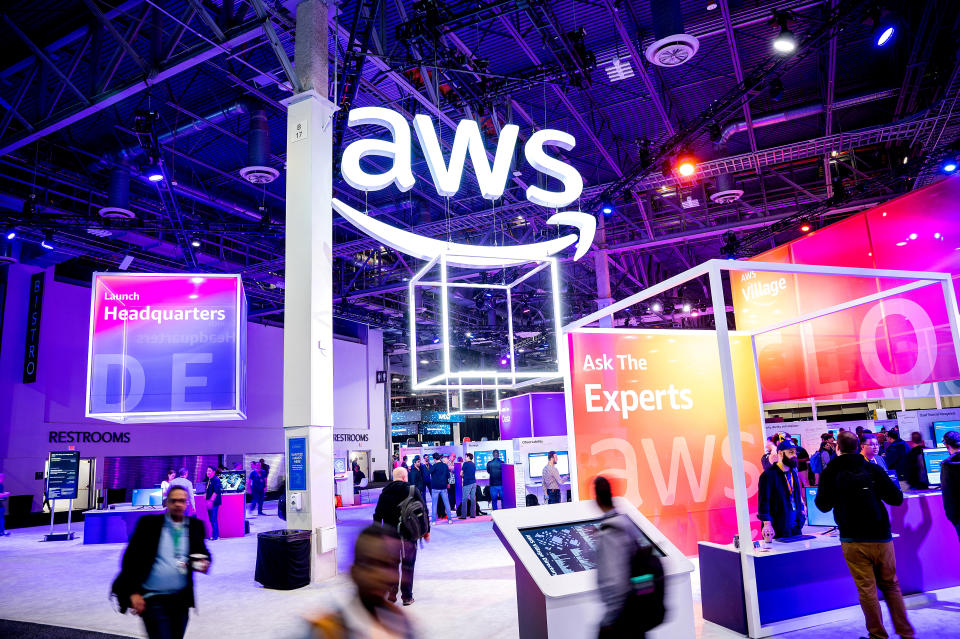The lack of real-time data in the early days of the COVID-19 pandemic, while frustrating, was not a new problem for the U.S.
A similar issue existed during the 2009 flu pandemic a decade earlier — but it was worse.
“The way you found out about school-aged kids dying in emergency rooms wasn’t from a surveillance system. It was the front page of the Boston Globe,” said Dr. Taha Kass-Hout.
He would know. Kass-Hout had just joined the CDC, mid-outbreak, as director of Health Informatics Solutions and Operations. He began building out a surveillance system, on Amazon (AMZN) Web Services, that still exists today.
“It’s the same system used as a front line for COVID,” Kass-Hout, now chief medical officer of AWS, told Yahoo Finance in a recent interview.
That same system now covers 93% of the U.S. population, compared to a system that only covered 8% back in 2009, he said. With some updates, of course.
Kass-Hout is now in a leading role at the largest cloud computing company — with a third of market share. He says that what started during the Obama administration at the federal level to incorporate more technology in government is now also being seen at state and local levels.
Both the FDA and CDC rely on AWS, as does the U.K.’s National Health Service, according to Kass-Hout, who previously served as the FDA’s chief technology officer and first chief health informatics officer in 2013.
The Minnesota Health Department also built up a governor’s COVID-19 notification system “in a matter of weeks on AWS” without having to invest in additional technologies, Kass-Hout said.
On the other side of the Atlantic Ocean, COVID hit just as the U.K. was withdrawing from the European Union. Residents were anxious about their health coverage and how the National Health Services (NHS) would operate in a post-Brexit world.
AWS was able to help buoy an overworked call center staff, struggling with labor shortages as more employees got sick with Covid, by building up an intelligent call center that could answer some of the most frequently asked questions about coverage and, later on, about vaccines and treatments, Kass-Hout explained.
It’s a few paces behind ChatGPT, the natural language bot which recently captured public attention, but the real use case brings back the potential for the technology after it soured in the years after IBM Watson’s decline.
Industry buy-in
But it wasn’t just governments that benefitted this time. Moderna (MRNA) relied on a program built on AWS, to determine the right COVID vaccine candidate, and Pfizer (PFE) and AstraZeneca (AZN) have similarly been using AWS, according to Kass-Hout.
And that trend is on the rise as more life sciences companies adapt to the cloud beyond simply storing data. In fact, early stage AI modules are already being deployed to help find new treatments.
“The R&D is a really healthy environment where they want to experiment more. They want to try to kind of go after new indication, understand the biology more,” Kass-Hout said.
Insurers, or payers, are another segment of the health industry interested in using cloud technology. Anthem Blue Cross Blue Shield, which now operates as Elevance Health (ELV), is one example of that.
“They have a lot of data accumulating on members for years on end. And a lot of this data is unstructured in nature,” Kass-Hout said.
“If you look at the benefits, 90% of the data is scanned PDFs and faxes or something,” he said.
With AWS, the company can use a text extractor and save the information into a digital file — a process that is now almost 90% automated, he said.
“Something that used to take weeks, now they can do it in a matter of hours,” Kass-Hout said.
“It’s really great to see how innovation’s happening where you don’t have to be a technologist,” and can still benefit from technology while serving patient populations, he said.
The technology isn’t new, but it hasn’t been leveraged in appropriate ways and new projects often fall to the wayside, according to a 2021 McKinsey report.
“Cloud capabilities have the potential to generate value of $100 billion to $170 billion in 2030 for healthcare companies. The major driver of this value lies in enabling them to more effectively innovate (for example, new use cases in analytics, IoT, and automation), digitize (for example, stakeholder journey transformation), and realize their strategic objectives,” the report said.
Kass-Hout says that health care has always been a target for the technology, as a nearly $8 trillion global industry.
“I do believe in the next five to 10 years, almost every health care company will be in the in cloud,” he said.
Follow Anjalee on Twitter @AnjKhem
Read the latest financial and business news from Yahoo Finance
Download the Yahoo Finance app for Apple or Android
Follow Yahoo Finance on Twitter, Facebook, Instagram, Flipboard, LinkedIn, and YouTube




